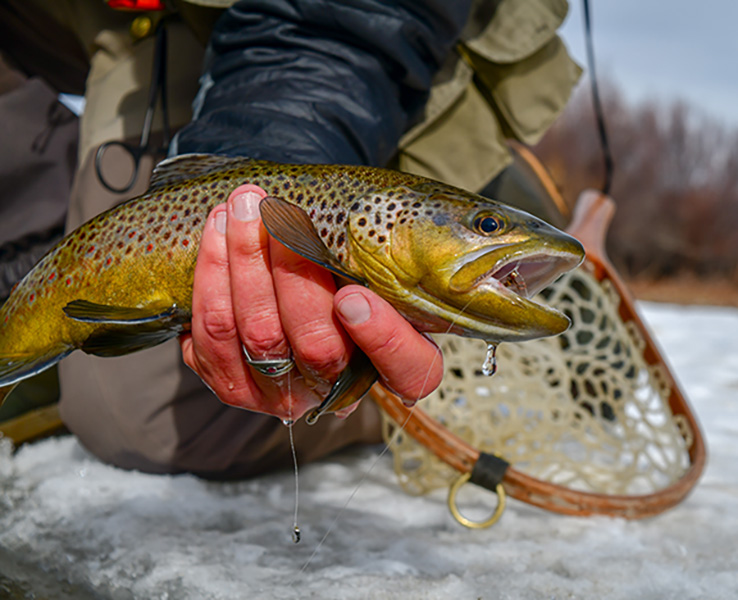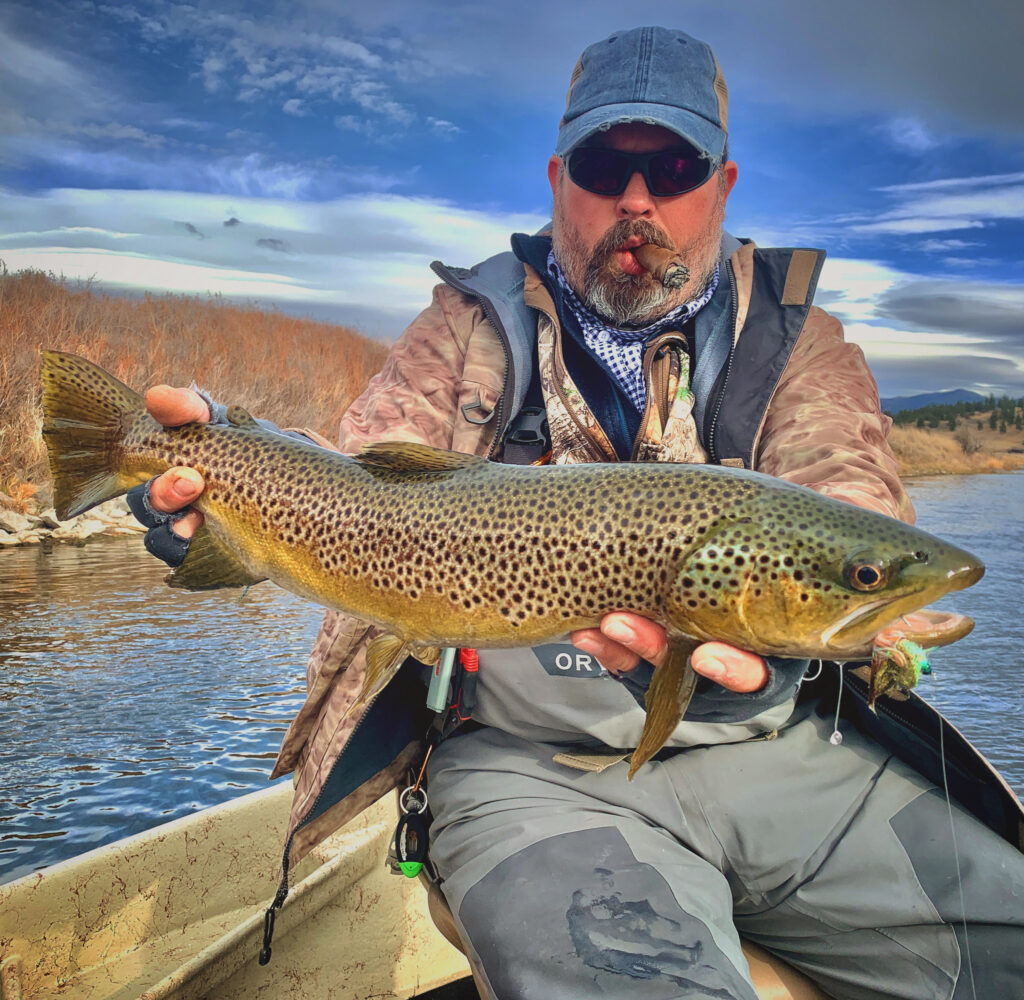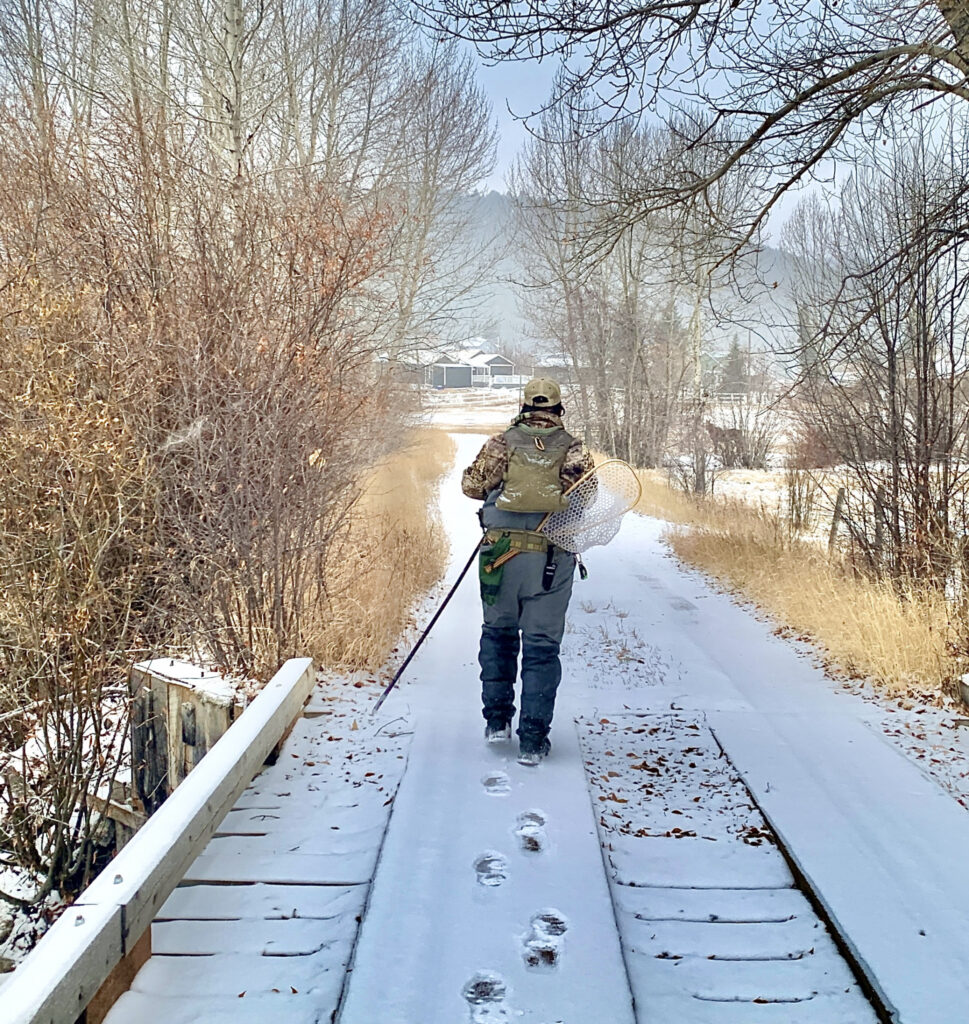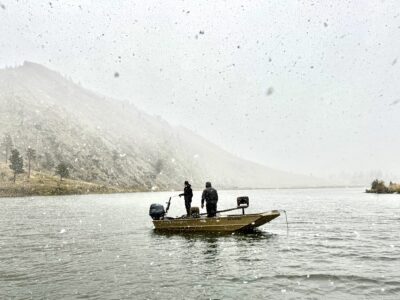As winter sets in over Craig Montana, many anglers stash away their rods and waders, retreating to the warmth of fly-tying benches and daydreaming about spring hatches. But for those willing to embrace the cold, the Missouri River system offers some of the most rewarding and peaceful fly fishing opportunities of the year. The crowds are gone, the trout are still feeding, and the scenery is as breathtaking as ever. With the right approach, a winter day on the Mighty Missouri can yield some incredible results.
Types of Water to Target in Winter
Winter fishing on the Missouri river is all about efficiency and understanding trout behavior in cold water. As temperatures drop, trout become more lethargic, conserving energy and seeking out areas where they don’t have to fight currents. Here are the prime types of water to focus on:
- Slow, Deep Runs – In winter, trout seek the path of least resistance. This means deeper runs where the current is moderate, allowing them to hold without expending too much energy. Look for areas with depths of 4-6 feet where fish can stack up in softer water.
- Tailouts – Just below riffles, where the current slows down before transitioning into a deeper run, can be productive. Fish often sit here, picking off drifting food without much effort.
- Eddies and Soft Seams – Slower backwater eddies and soft seams along the edges of main currents provide ideal winter holding water. These areas trap food and allow trout to feed with minimal effort.
- Deep Buckets – In larger, deep pools, fish often hunker down and stack up. These spots can be productive for nymphing and streamer fishing, as trout tend to hold deep but will still take a properly presented fly.

Best Nymphs for Winter Fishing on the Missouri
Since trout aren’t aggressively chasing food in winter, nymphing is by far the most effective method. Missouri River trout continue to feed on midges, sow bugs, and the occasional baetis nymph. Here are some of the top patterns:
- Sow Bugs (Size 14-18) – Sow bugs are a steady food source for brown and rainbow trout on the Missouri. A Ray Charles, tailwater sows and Pederson’s sow bugs are must-haves.
- Midges (Size 18-20) – Zebra Midges (black, red, or olive), and JuJu Midges are all excellent winter choices.
- Scuds (Size 14-18) – Below Holter dam scuds play a key role in a trout’s diet. Pink, grey and rainbow scud patterns can be highly productive patterns.
Spey Fishing for Winter Success
Trout spey fishing in winter can be fantastic. Fishing with two handed rods can help produce some big fish when swinging small streamers and soft hackles. The key is to slow down the swing and focus on deep, slow-moving water.
- Thin Mint – A jigged leech-style streamer that moves naturally in slower water.
- Kreelex – A flashy baitfish pattern that works well on sunny days.
- Bunny Leeches – Black, olive, and natural colors work best, mimicking leeches and small baitfish.

Winter Dry Fly Opportunities
While dry fly fishing is limited in winter, it’s not completely off the table. On warmer days with little wind, midges will hatch, and fish can be found sipping on the surface. Here’s what to have in your winter dry fly box:
- Griffith’s Gnat (Size 16-22) – A classic and effective pattern for midge clusters.
- Single Adult Midges (Size 18-20) – A small black or gray adult midge pattern is perfect for finicky winter risers.
- Parachute Adams can be effective in sizes 14-18
- Cluster Midge is easy to see and very effective in sizes 16-18
Winter Fishing Strategies
Winter Fishing on the Missouri River is not just about fly selection; approach and strategy are equally important.
- Fish the Warmest Part of the Day – Unlike summer, the best bite is usually between late morning and mid-afternoon when water temperatures are at their peak.
- Slow Down Your Presentation – For streamer fishing, slow and deliberate movements are key. Fish won’t chase aggressively in winter.
- Use Lighter Tippet – Clear winter water and slow-moving fish mean that 4x or even 4.5x fluorocarbon tippet is often necessary for success.
- Adjust Your Depth – With nymphing, be ready to add or remove split shot as well as your strike indicator to keep your flies in the strike zone.
- Stay Mobile but Be Methodical – Covering water is still important, but slow down your approach and thoroughly work promising runs.
- Dress Warm and Be Prepared – Wear layered clothing, insulated boot foot waders, and always have gloves that allow you to manage your line and flies ( surgical gloves are great!)

Final thoughts
Winter Fishing on the Missouri River is a different experience from the peak-season of summer. It’s quiet, rewarding, and offers the chance to connect and learn more about the river in a more intimate way. Whether you’re rowing a drift boat through deep winter runs or wading carefully along a slow seam, the key is patience, and staying warm. With the right approach, you can enjoy some of the best fishing of the year while having entire stretches of the river to yourself.


 Best Times to Fly Fish the Missouri
Best Times to Fly Fish the Missouri
Leave a Reply